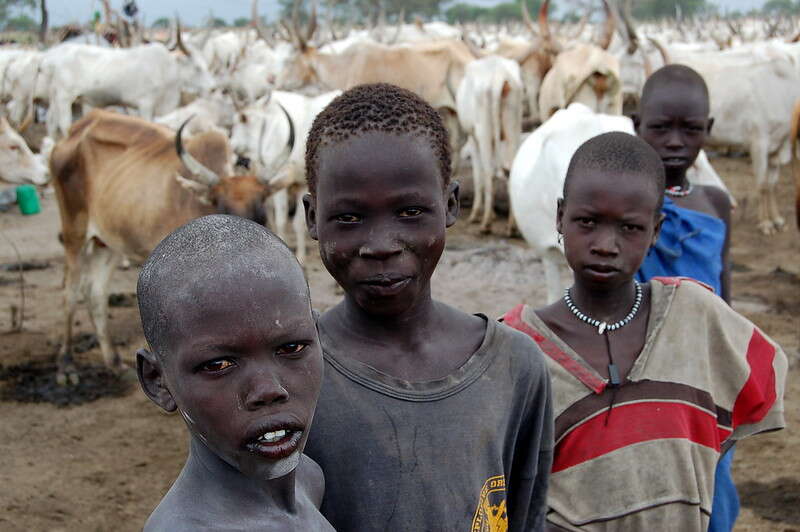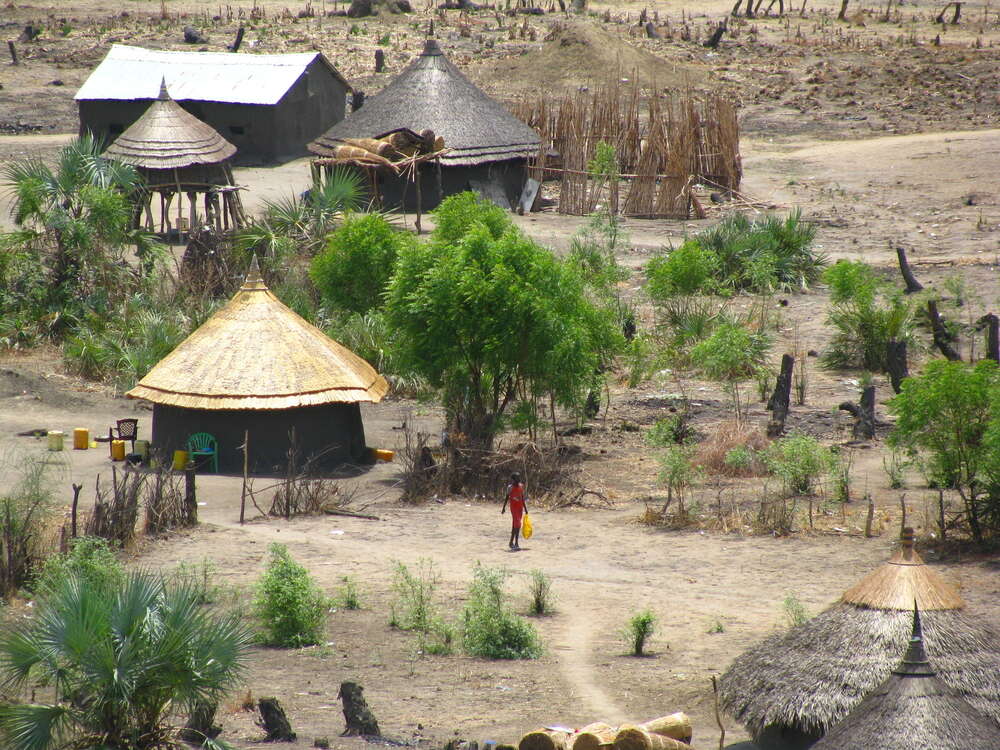In Africa, a huge number of corners have been preserved with no contact with modern civilization. In these corners, original tribes live, whose way of life has not changed for millennia. They keep traditional beliefs, rituals, and the way they dress. Their manners and customs can sometimes seem strange and wild. One of these tribes is the Dinka people, cattle keepers, who live on the banks of the great African river Nile.
People and Сows
The country where the Dinka live is South Sudan. In addition to them, there are other tribes here, but it is the Dinka people that have the largest in population. They live on both banks of the Nile, and a cow is at the heart of most traditions. Because of the cow-centrism, the neighboring peoples even call the Dinka "the horned tribe".
For representatives of the Dinka people, cows are a symbol of prosperity, status, almost living deities that give life. Children in the tribe learn to care for cows from the first years of their lives and migrate with the livestock until old age. A cow or several cows act as bride price before the wedding. Cow manure is used to fertilize soil, light a fire and scare away insects. Even barns are larger than human houses.

📸Photo by: UNEP Disasters & Conflicts
The country where the Dinka live is South Sudan. In addition to them, there are other tribes here, but it is the Dinka people that have the largest in population. They live on both banks of the Nile, and a cow is at the heart of most traditions. Because of the cow-centrism, the neighboring peoples even call the Dinka "the horned tribe".
For representatives of the Dinka people, cows are a symbol of prosperity, status, almost living deities that give life. Children in the tribe learn to care for cows from the first years of their lives and migrate with the livestock until old age. A cow or several cows act as bride price before the wedding. Cow manure is used to fertilize soil, light a fire and scare away insects. Even barns are larger than human houses.
Land of All the Gods
The Dinka population is about 3 million people. In such a large community of people, there is a place for almost all beliefs, from ancient to modern. Most of the Dinka deify the forces of nature, honor the cult of ancestors and erect primitive totems. Part of the tribe adopted Islam from the Arabs settling in North Africa, and part of them imbued with the ideas of Catholic Christianity from European missionaries. Naturally, world religions melted down in the crucible of the Black Continent and transformed into something completely original.

Shamans, or rain spellcasters, are highly respected by the Dinka. Since the life of the tribe is directly dependent on the rainy seasons, the shaman who can make it rain literally saves his people from hunger. Shamanistic rituals can last for several hours, during which the spellcasters continuously dance, chant in the language of the tribe, and stretch their hands to the sky.
Naked and Armed
The Dinka are considered to be the tallest people in Africa and one of the tallest in the world. The average height of a native is 180-190 centimeters. Being slim and skinny, which is typical for African tribes, they look very impressive.
The Dinka women do not wear makeup or clothing. For unmarried girls, this is considered to be a symbol of innocence. After the wedding, a goat hair apron appears in the wardrobe, as well as a large number of beaded jewelry. Some women wear beaded corsets or dozens of beads that cover their entire breasts. Long hair is not honored among the tribes, on the contrary, an almost completely shaved head is considered to be a symbol of beauty.

📸 Photo by: Carlo Grossi
The Dinka practically do not use the achievements of modern civilization, the only exception is firearms. Rifles and AK-47s are used to protect precious livestock, intimidate neighbors and repel attacks.
The Dinka people are one of the little-studied, but very interesting tribes of Africa. Their way of life has not changed since about the 10th century and might not change for many centuries.

 Русский
Русский
 Deutsch
Deutsch
 Українська
Українська
 Español
Español
 Italiano
Italiano
 Français
Français
 Polski
Polski
 Čeština
Čeština
 Қазақ
Қазақ
